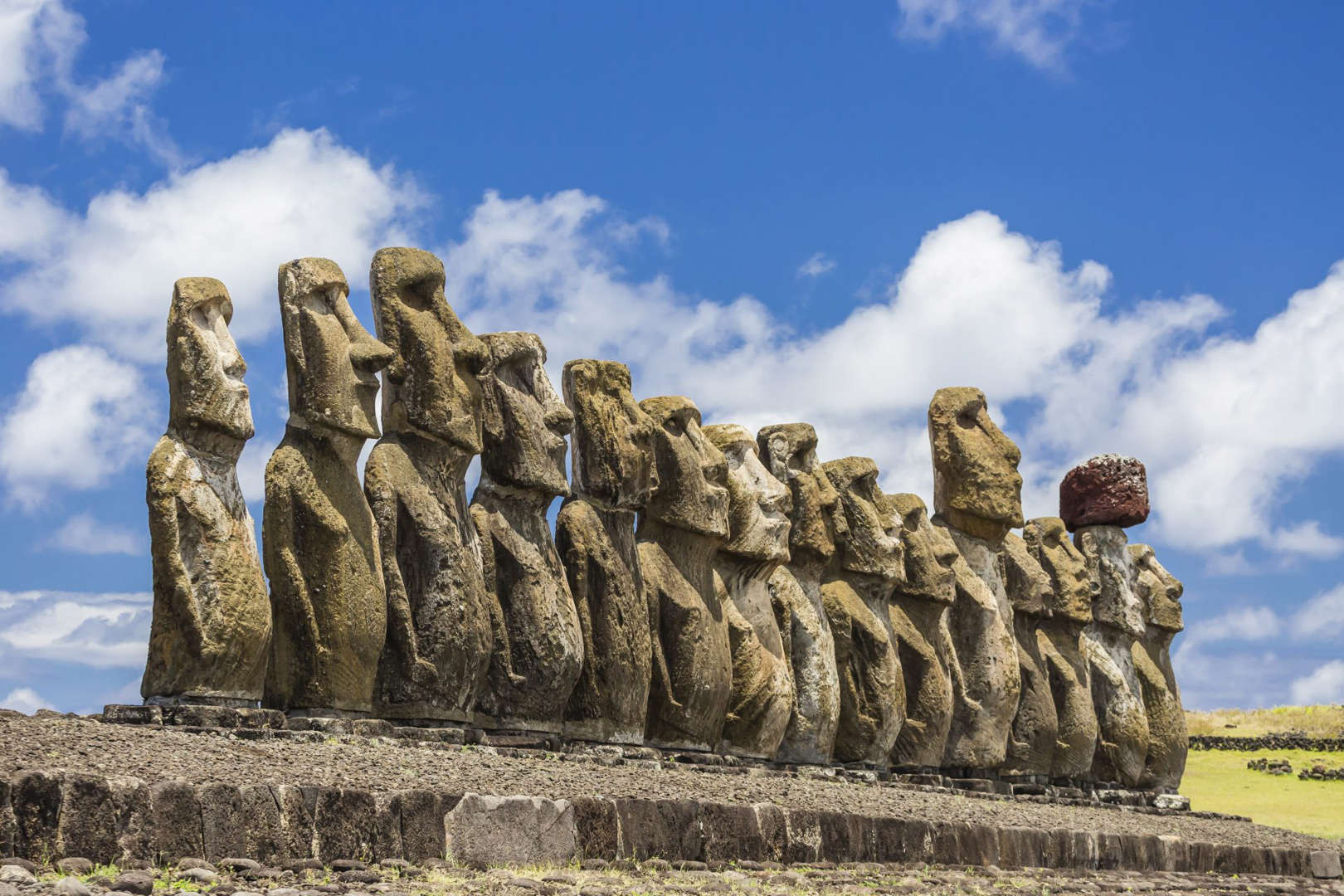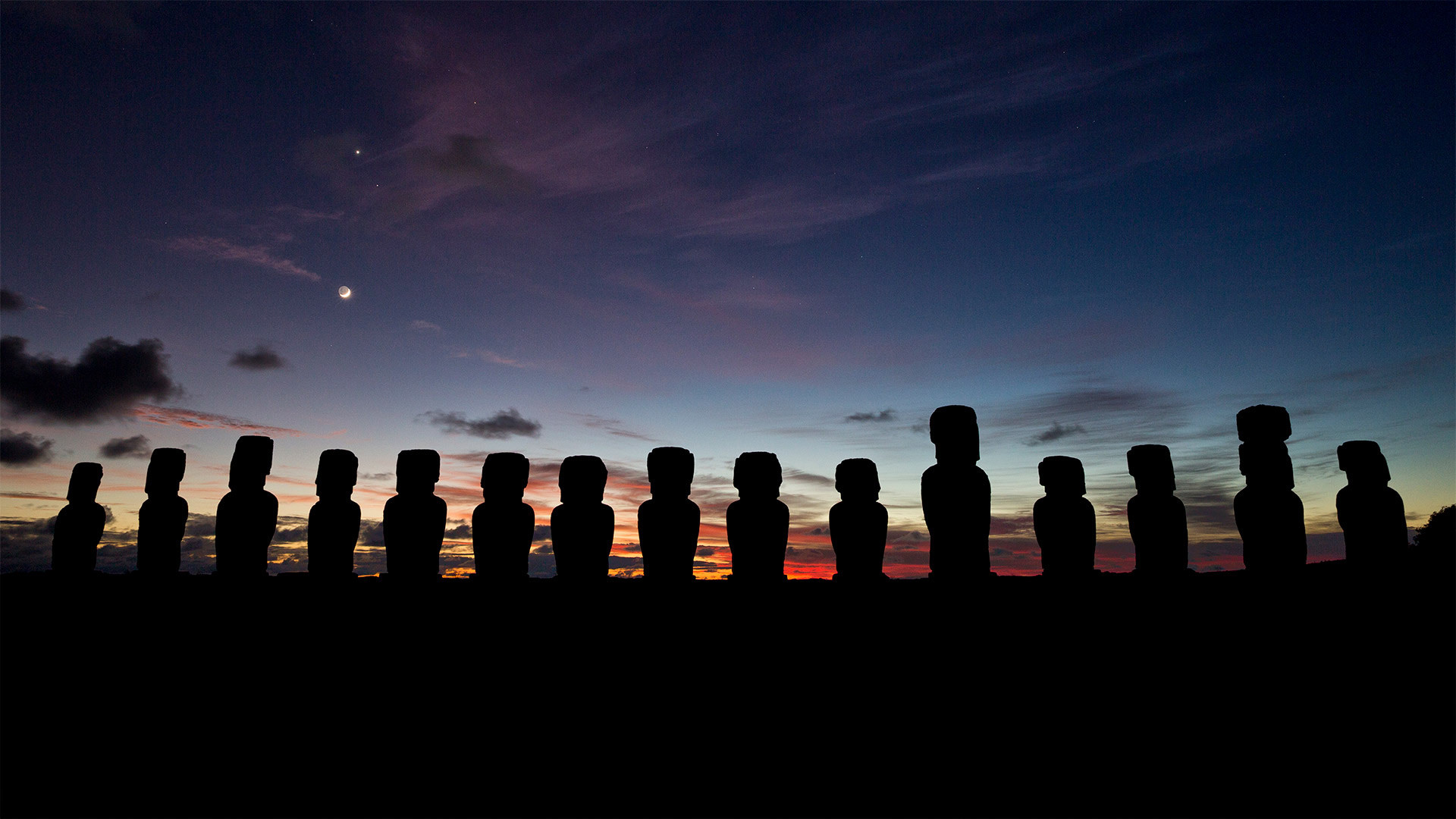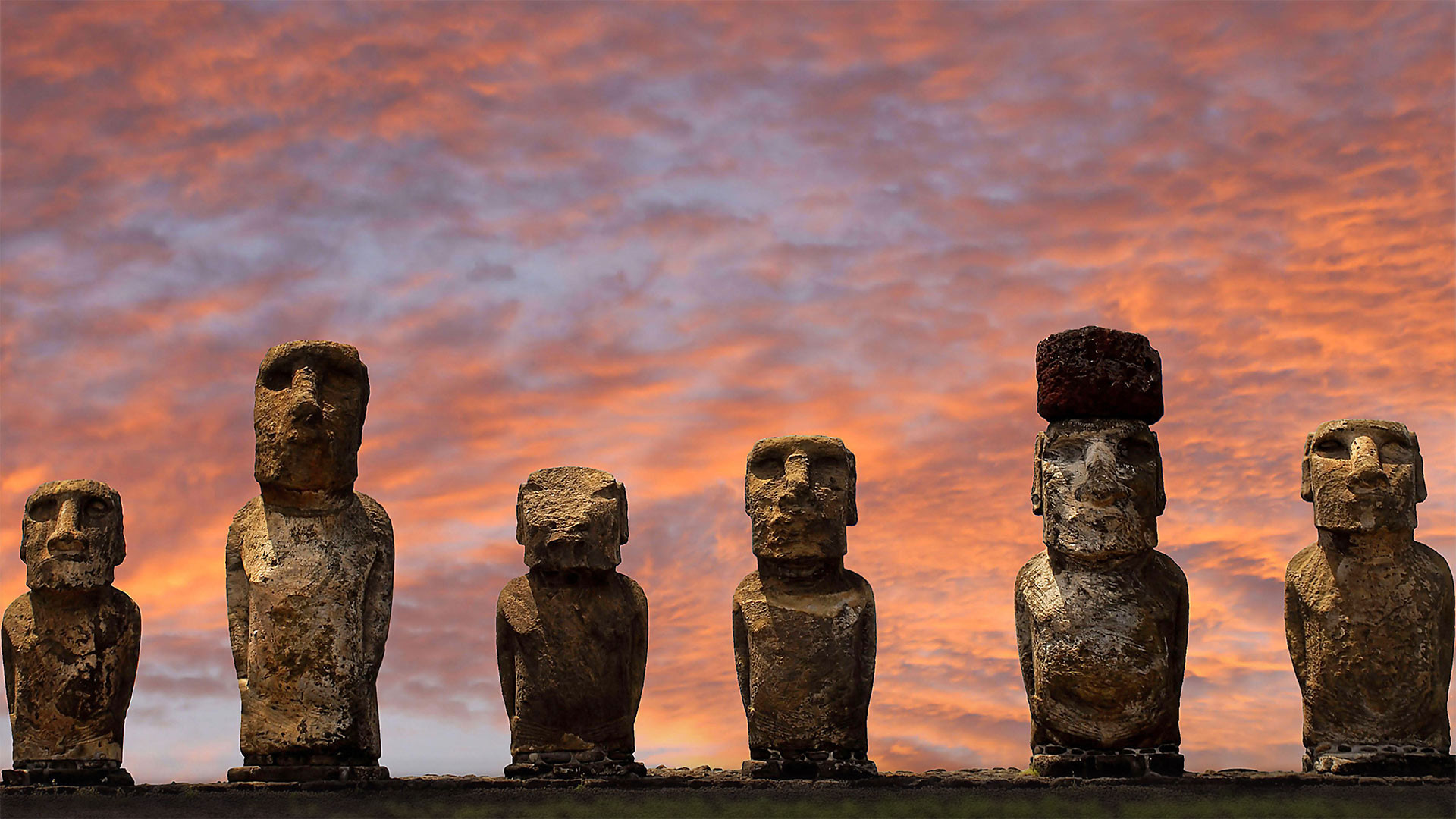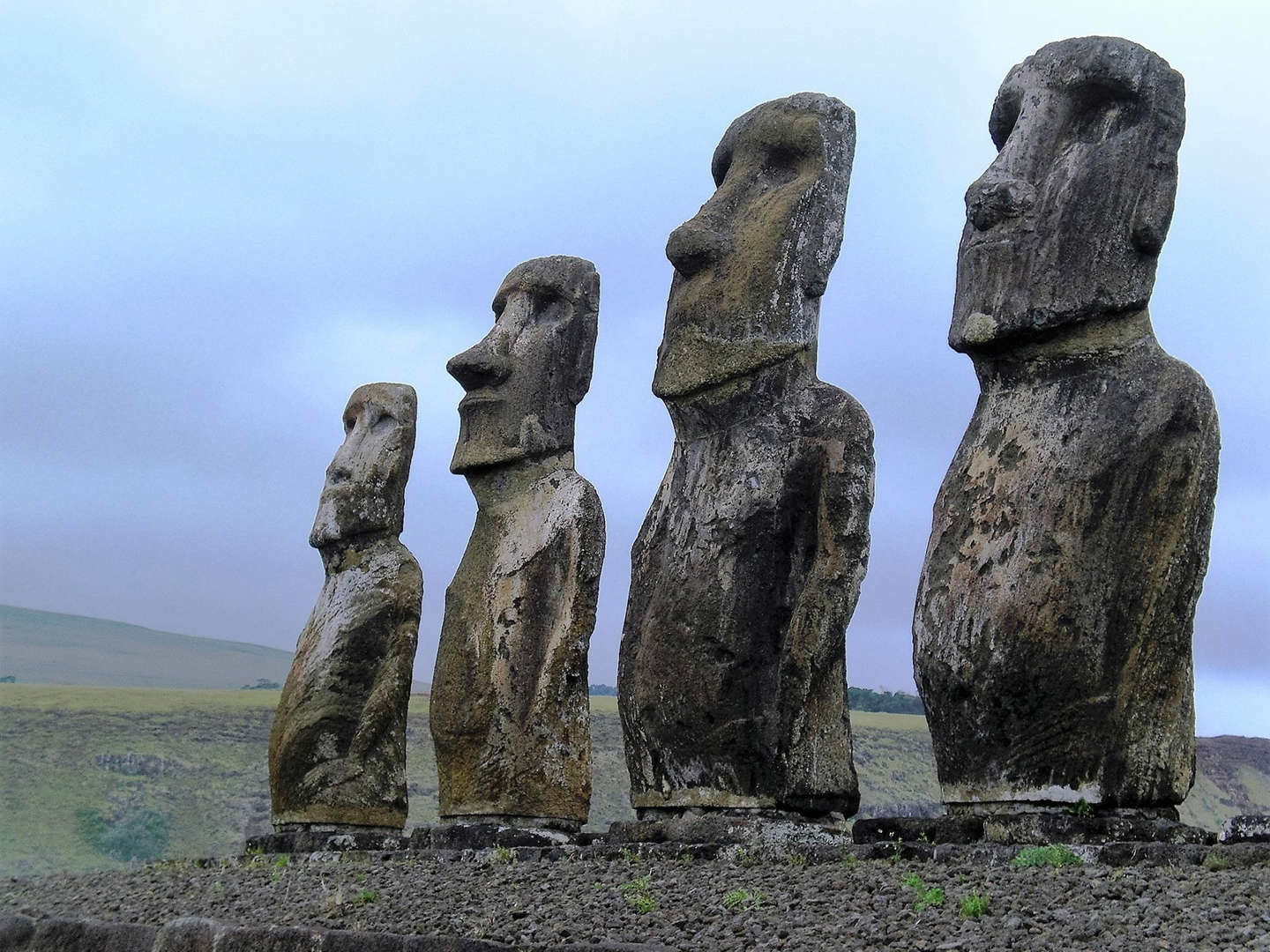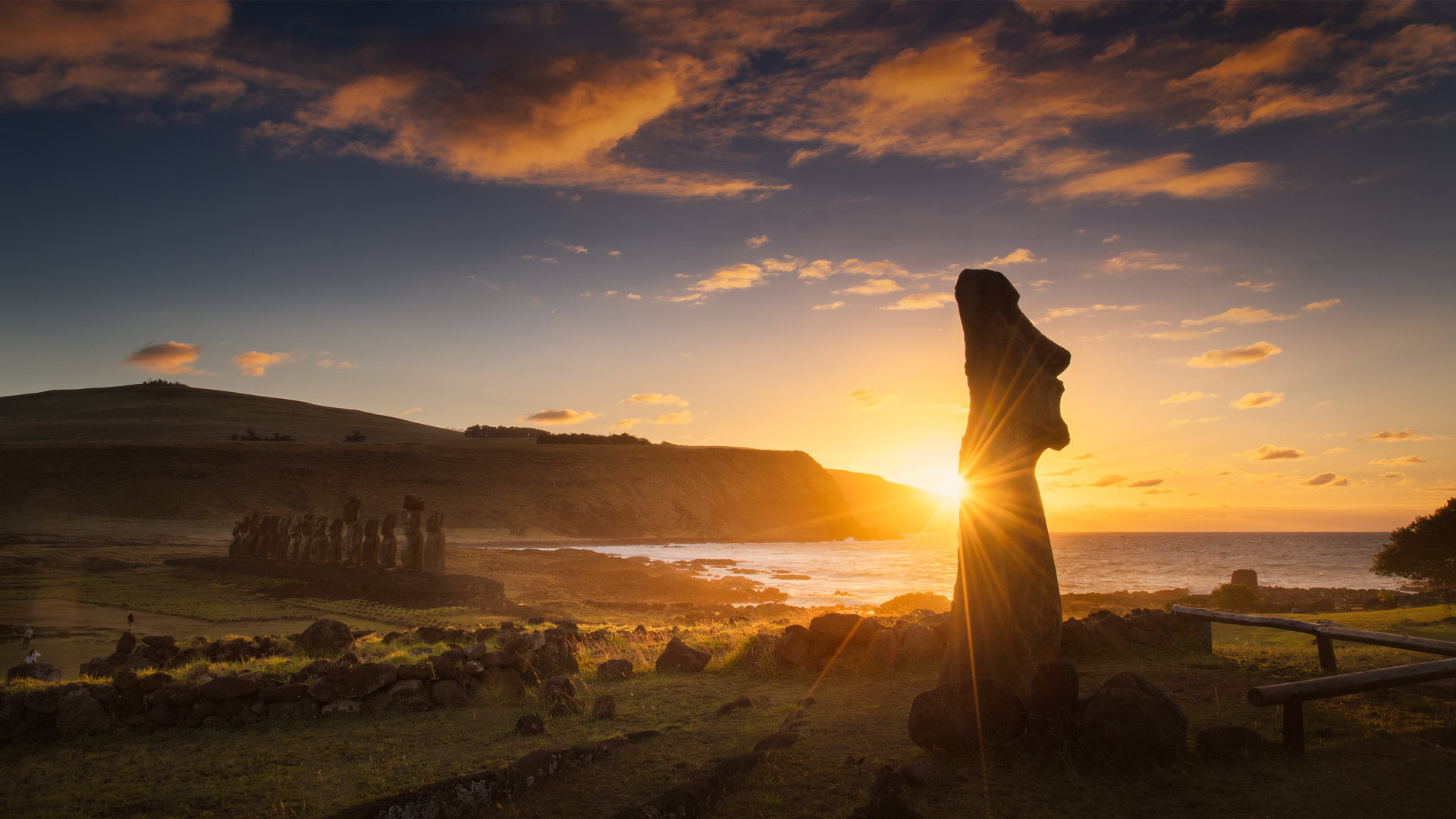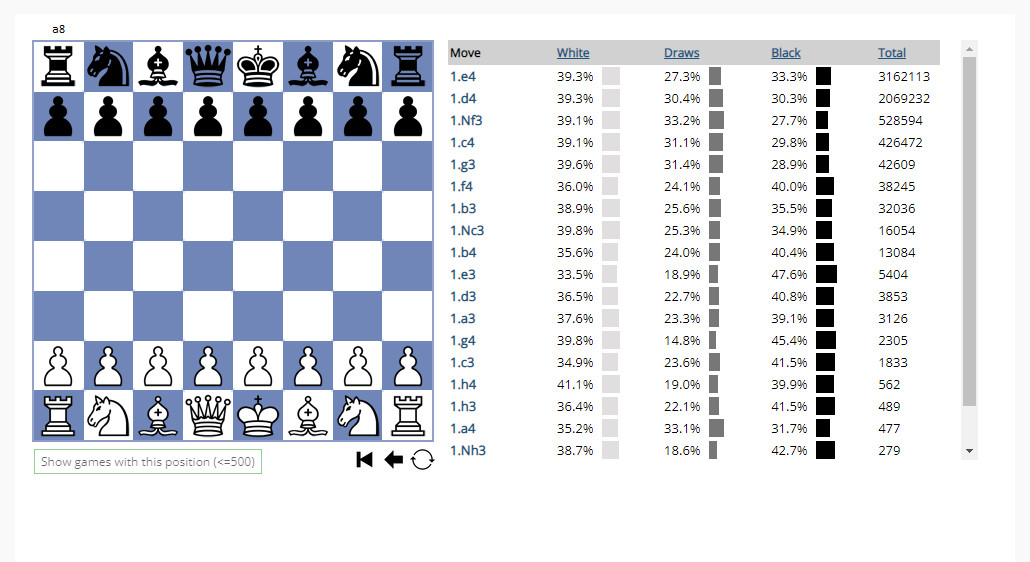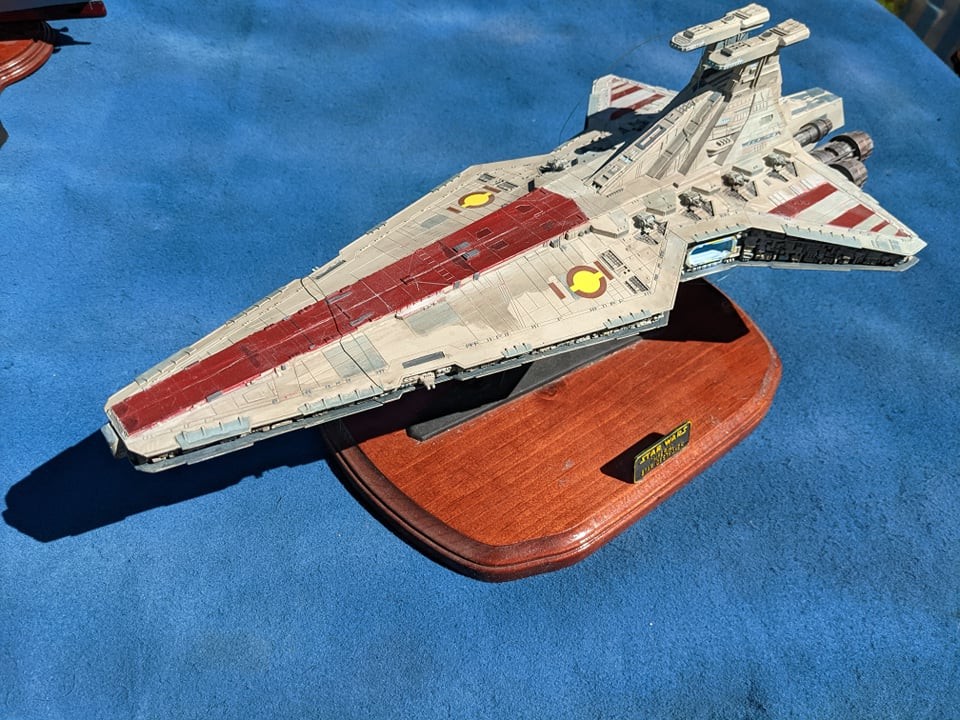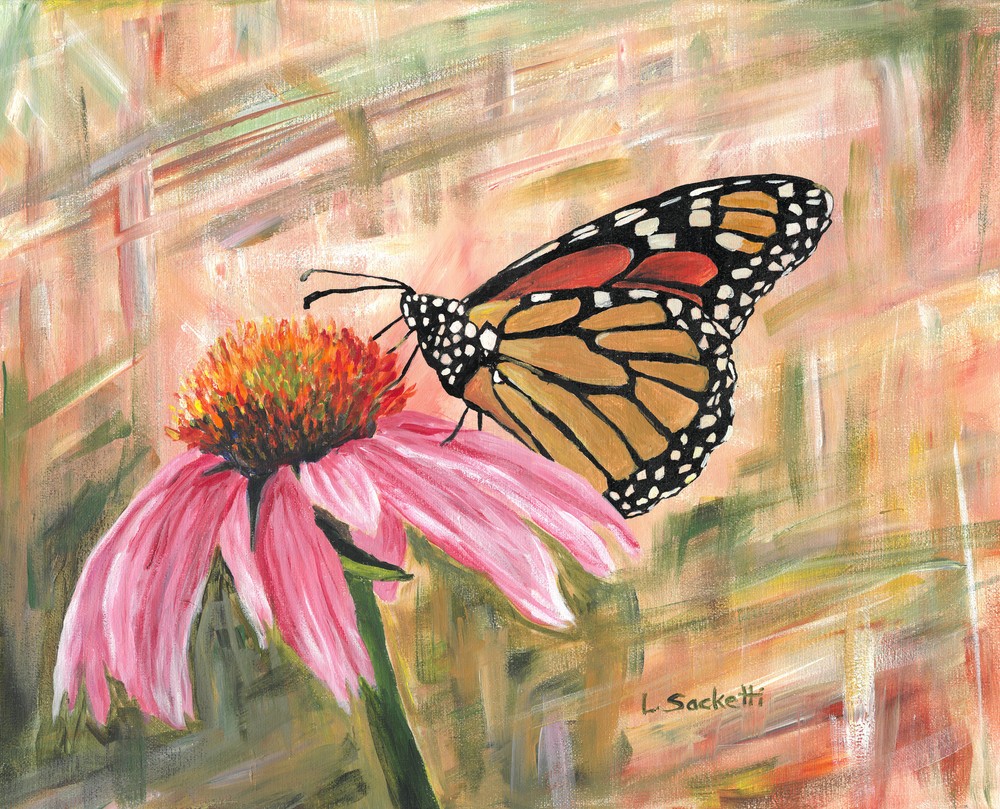European accounts in 1722 (Dutch) and 1770 (Spanish) reported seeing only standing statues, or moais, which were still venerated, in Easter Island, but by James Cook's visit in 1774, many were reported toppled. This statue-toppling continued into the 1830s. By 1860s, no moais were left standing. In about 60 years, the islanders had damaged this part of their ancestors' heritage; theories range from intertribal warfare to loss of faith in their ancestors' ability to protect them. In modern times, moais have been restored at Anakena, Ahu Tongariki, Ahu Akivi and Hanga Roa.
Pictured here are the fifteen standing moai at Ahu Tongariki, the largest stone platform on Easter Island (or Rapa Nui, as it was called by its original inhabitants). These moais had been toppled as mentioned above, and furthermore, in the 20th century the stone platform was also swept inland by a tsunami. Nonetheless, Ahu Tongariki was substantially restored in the 1990s through the efforts of a multidisciplinary team headed by archaeologists Claudio Cristino and Patricia Vargas Casanova. All the moai here face sunset during the winter solstice.
